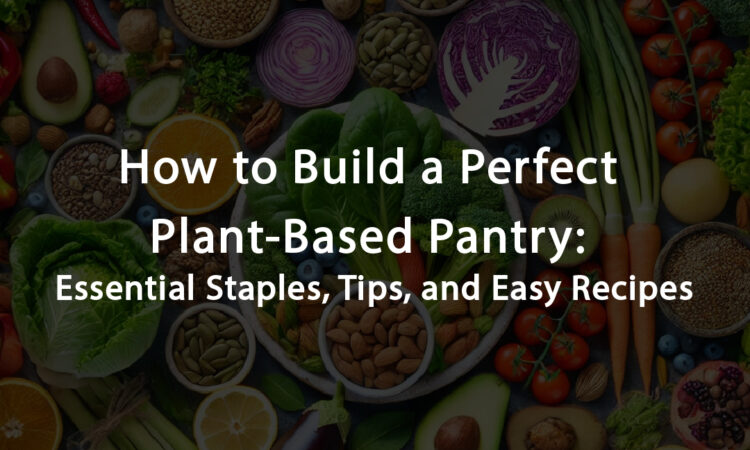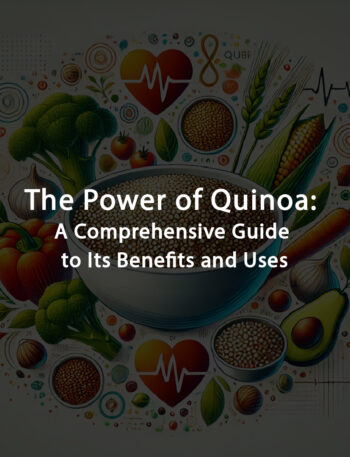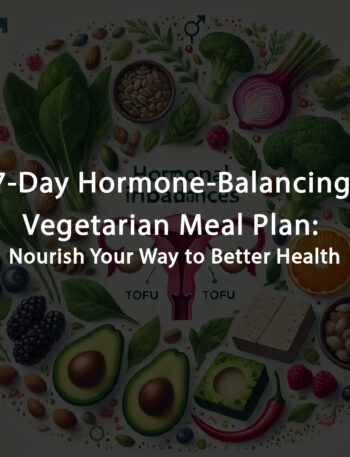Switching to a plant-based diet or simply incorporating more plant-based meals into your lifestyle can be an exciting and healthy choice. Whether you’re a seasoned vegan or just starting your journey, having a well-stocked pantry is key to creating delicious, nutritious meals with ease. A plant-based pantry is more than just a collection of ingredients—it’s your toolkit for culinary creativity, helping you whip up everything from quick snacks to elaborate dinners.
In this comprehensive guide, we’ll cover everything you need to know to build the perfect plant-based pantry. We’ll explore essential ingredients, how to store them, and tips for using them in everyday cooking. We’ll also provide some simple, tasty recipes to get you started.
Why Build a Plant-Based Pantry?
A well-stocked plant-based pantry offers several benefits:
- Convenience: With the right ingredients on hand, you can easily create a variety of meals without frequent trips to the grocery store.
- Health: Stocking up on whole, unprocessed foods helps you maintain a healthy diet rich in fiber, vitamins, and minerals.
- Sustainability: Choosing plant-based ingredients over animal products can reduce your environmental footprint.
- Cost-Effectiveness: Buying pantry staples in bulk can save you money in the long run, and you can avoid the temptation of costly takeout meals.
Essential Plant-Based Pantry Staples
Building a plant-based pantry is about choosing versatile, nutrient-dense ingredients that can be used in a variety of dishes. Here’s a breakdown of the key categories to include:
1. Whole Grains
Whole grains are a fantastic source of complex carbohydrates, fiber, and essential nutrients. They provide energy and serve as the base for many plant-based meals.
- Quinoa: A complete protein, quinoa is rich in fiber, iron, and magnesium. Use it in salads, bowls, and as a side dish.
- Brown Rice: A whole grain that’s high in fiber and minerals. It’s perfect for stir-fries, casseroles, and as a base for grain bowls.
- Oats: Versatile and nutritious, oats can be used for breakfast porridges, smoothies, and even savory dishes like veggie burgers.
- Farro: An ancient grain with a nutty flavor and chewy texture, great in salads and soups.
- Barley: High in fiber and great for adding to stews and salads.
- Whole Wheat Pasta: A healthier alternative to regular pasta, whole wheat pasta is rich in fiber and nutrients.
Storage Tip: Store grains in airtight containers in a cool, dark place to keep them fresh for longer.
2. Legumes and Pulses
Legumes are a powerhouse of plant-based protein, fiber, and essential nutrients like iron and folate. They’re also incredibly versatile, suitable for everything from soups to salads to dips.
- Lentils: Available in various types (green, red, brown, and black), lentils cook quickly and are perfect for soups, stews, and salads.
- Chickpeas (Garbanzo Beans): Great for making hummus, adding to salads, or roasting for a crunchy snack.
- Black Beans: Rich in protein and fiber, black beans are excellent in tacos, salads, and burgers.
- Kidney Beans: Perfect for chili and stews.
- Cannellini Beans: Creamy and mild, they’re great in soups and Italian dishes.
- Split Peas: Ideal for making split pea soup, these are packed with fiber and protein.
Storage Tip: Dry beans can be stored in airtight containers for up to a year. Canned beans are convenient but choose low-sodium options and rinse them before use.
3. Nuts and Seeds
Nuts and seeds provide healthy fats, protein, and essential minerals. They can be used in baking, as toppings, or to make plant-based milks and butters.
- Almonds: Use whole almonds for snacking, slivered almonds for salads, and almond flour for baking.
- Cashews: Ideal for making creamy sauces and vegan cheeses.
- Walnuts: Rich in omega-3 fatty acids, great for baking or as a salad topping.
- Chia Seeds: High in fiber and omega-3s, perfect for smoothies, puddings, and baking.
- Flaxseeds: Ground flaxseeds can be used as an egg replacement in baking and are rich in fiber and omega-3s.
- Pumpkin Seeds: High in protein and iron, great for snacking or adding to salads and granola.
- Sunflower Seeds: Use them in salads, granola, or to make sunflower seed butter.
Storage Tip: Nuts and seeds can become rancid over time. Store them in the refrigerator or freezer to extend their shelf life.
4. Plant-Based Proteins
A variety of plant-based proteins are available that can mimic the texture and taste of meat, making them great for those transitioning to a plant-based diet.
- Tofu: Available in silken, soft, firm, and extra-firm varieties, tofu is versatile and can be used in everything from smoothies to stir-fries.
- Tempeh: Made from fermented soybeans, tempeh has a firm texture and a nutty flavor. It’s great in stir-fries, sandwiches, and salads.
- Seitan: Also known as wheat meat, seitan is made from gluten and has a chewy texture that’s perfect for vegan “meat” dishes.
- Textured Vegetable Protein (TVP): Made from soy, TVP is a great meat substitute in dishes like chili, tacos, and pasta sauces.
- Edamame: Young soybeans that can be added to salads, stir-fries, or enjoyed as a snack.
Storage Tip: Store tofu in the refrigerator and use it within a week of opening. Tempeh and seitan can also be refrigerated or frozen for longer storage.
5. Cooking Oils and Condiments
Having a variety of cooking oils and condiments on hand helps you add flavor and texture to your dishes.
- Olive Oil: Great for sautéing, salad dressings, and drizzling over finished dishes.
- Coconut Oil: Adds a subtle sweetness and richness to dishes. It’s great for baking and cooking.
- Sesame Oil: Adds a nutty flavor to stir-fries and Asian-inspired dishes.
- Apple Cider Vinegar: Use in dressings, marinades, or as a health tonic.
- Tamari or Soy Sauce: Adds umami flavor to stir-fries, marinades, and sauces.
- Tahini: Made from ground sesame seeds, tahini is used in hummus, dressings, and sauces.
- Nutritional Yeast: A cheesy, nutty seasoning that’s high in B-vitamins, often used in vegan “cheese” sauces and as a popcorn topping.
Storage Tip: Store oils in a cool, dark place to prevent them from going rancid. Keep condiments tightly sealed and refrigerate after opening if necessary.
6. Spices and Herbs
Spices and herbs are essential for adding flavor to plant-based dishes. A well-stocked spice rack can turn simple ingredients into delicious meals.
- Turmeric: Anti-inflammatory and great for curries, soups, and golden milk.
- Cumin: Adds warmth and earthiness to dishes like chili and tacos.
- Coriander: Often used in combination with cumin, it’s great in Middle Eastern and Indian dishes.
- Paprika: Adds a mild sweetness and color to dishes.
- Cinnamon: Versatile for both sweet and savory dishes.
- Garlic Powder and Onion Powder: Essential for seasoning a variety of dishes.
- Dried Herbs: Basil, oregano, thyme, and rosemary are staples for flavoring everything from pasta sauces to roasted vegetables.
Storage Tip: Store spices and herbs in a cool, dark place to maintain their potency. Replace them every 6-12 months for the best flavor.
7. Sweeteners
While a plant-based diet focuses on whole foods, having a few natural sweeteners on hand is useful for baking and sweetening beverages.
- Maple Syrup: A natural sweetener that’s great for baking, drizzling over pancakes, or adding to smoothies.
- Agave Nectar: A liquid sweetener that can be used in beverages and desserts.
- Coconut Sugar: A lower-glycemic alternative to white sugar.
- Medjool Dates: A whole-food sweetener that can be blended into smoothies, energy balls, or used in baking.
Storage Tip: Store sweeteners in tightly sealed containers to prevent crystallization and maintain their texture.
Tips for Building and Maintaining Your Plant-Based Pantry
- Start Small: Begin by purchasing a few key items from each category. Gradually build up your pantry over time as you discover what you like and use frequently.
- Buy in Bulk: Purchasing items like grains, beans, and nuts in bulk can save money and reduce packaging waste. Use airtight containers to store bulk items.
- Label Everything: Label containers with the name of the ingredient and the date it was purchased to keep track of freshness.
- Plan Ahead: Keep a list of pantry staples you use frequently and restock them as needed. This will prevent you from running out of essential items.
- Rotate Stock: Use older items first and place newer purchases at the back of your pantry to ensure nothing goes to waste.
- Experiment with Recipes: Use your pantry staples to try new recipes and flavors. Having a variety of ingredients on hand encourages culinary creativity.
Easy Plant-Based Recipes Using Pantry Staples
To help you get started, here are a few simple and delicious plant-based recipes that use common pantry staples:
Recipe 1: Quinoa and Black Bean Salad
Ingredients:
- 1 cup quinoa, rinsed and cooked
- 1 can black beans, drained and rinsed
- 1 cup corn kernels (fresh or frozen)
- 1 red bell pepper, diced
- 1 avocado, diced
- 1/4 cup chopped fresh cilantro
- 2 tablespoons olive oil
- 1 tablespoon lime juice
- 1 teaspoon cumin
- Salt and pepper to taste
Instructions:
- In a large bowl, combine the cooked quinoa, black beans, corn, bell pepper, avocado, and cilantro.
- In a small bowl, whisk together the olive oil, lime juice, cumin, salt, and pepper.
- Pour the dressing over the salad and toss to combine.
- Serve chilled or at room temperature.
Recipe 2: Lentil and Vegetable Stir-Fry
Ingredients:
- 1 cup cooked green or brown lentils
- 1 tablespoon sesame oil
- 2 cloves garlic, minced
- 1-inch piece of ginger, minced
- 1 bell pepper, sliced
- 1 cup broccoli florets
- 1 carrot, julienned
- 2 tablespoons tamari or soy sauce
- 1 tablespoon rice vinegar
- 1 tablespoon maple syrup
- Cooked brown rice, for serving
Instructions:
- Heat the sesame oil in a large pan over medium heat. Add the garlic and ginger and sauté for 1-2 minutes until fragrant.
- Add the bell pepper, broccoli, and carrot. Cook for 5-7 minutes, stirring frequently, until the vegetables are tender.
- Add the cooked lentils, tamari, rice vinegar, and maple syrup. Stir well to combine and heat through.
- Serve over cooked brown rice.
Recipe 3: Chickpea and Tomato Stew
Ingredients:
- 1 tablespoon olive oil
- 1 onion, chopped
- 2 cloves garlic, minced
- 1 can chickpeas, drained and rinsed
- 1 can diced tomatoes
- 1 teaspoon cumin
- 1/2 teaspoon smoked paprika
- 1/4 teaspoon cayenne pepper (optional)
- 1 cup vegetable broth
- Salt and pepper to taste
- Fresh parsley, for garnish
Instructions:
- Heat the olive oil in a large pot over medium heat. Add the onion and garlic and sauté until translucent.
- Add the chickpeas, diced tomatoes, cumin, smoked paprika, cayenne pepper, and vegetable broth. Stir to combine.
- Bring to a simmer and cook for 15-20 minutes until the flavors have melded together.
- Season with salt and pepper to taste. Serve with crusty bread and garnish with fresh parsley.
Building the perfect plant-based pantry is an ongoing process that will evolve as you discover new ingredients and recipes. By stocking up on essential grains, legumes, nuts, seeds, and spices, you’ll be well-equipped to create a variety of nutritious and delicious meals. Remember to plan ahead, buy in bulk when possible, and keep your pantry organized and well-labeled.
With a well-stocked pantry, you’ll find it easier to stick to a plant-based diet and enjoy the many health benefits it offers. Whether you’re preparing a quick weeknight dinner or experimenting with new flavors, your plant-based pantry will be the cornerstone of your culinary adventures.
Happy cooking!






